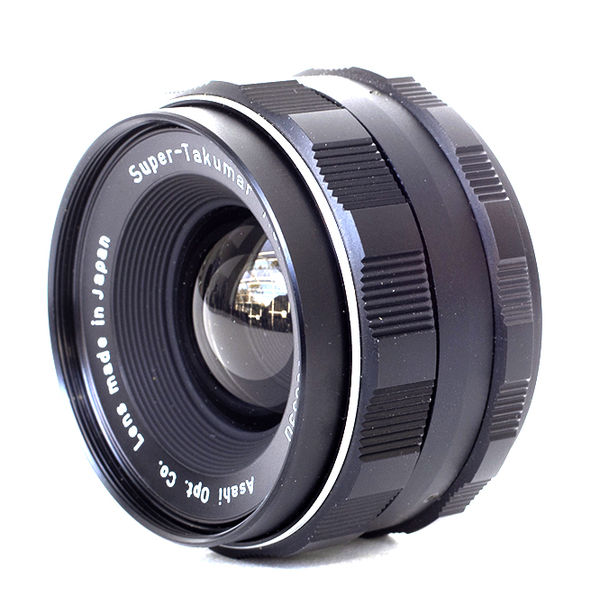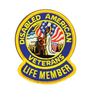About Those Backdrops...
Jan 21, 2019 14:54:30 #
Just Fred wrote:
I'm known here among a small circle of photographe... (show quote)
First off, I would place the background further away, so it will be out of focus, that alone will make your subjects stand out more. Second, light the subjects, don't emphasize the background, actually let the background be background and not be part of the subject!
Jan 21, 2019 17:00:16 #
carl hervol
Loc: jacksonville florida
It looks like you're using a bed sheet. If you use muslin back drop, you won't have this problem. And don't fold them roll them up.` 



Jan 21, 2019 17:25:50 #
Just Fred wrote:
I'm known here among a small circle of photographe... (show quote)
Both your photos, the guitar is against the backdrop.....it needs to be separated.. At least 5 feet... Depends on f stop (f5 or less) and lighting.... Trial and error till you get it.
The material can be ironed...I made an ironing board (I make quilts as another hobby). Cut a sheet of plywood in half lengthwise. Cover it with a thin batting and to or three layers of Muslin. Now you can iron material up to 96 inches wide, or cut the board to 6 feet and iron material up to 72 inches.... Use a spray bottle and constant stream on cotton setting....
If all this is to much, then buy a roll of background paper, and hang it work a background hanger or a piece of pipe. Or..... Buy a silky material, like satin or something similar, and shoot against the dull side. Fleece or any wrinkle free polyester material will work also. My personal choice would be gray or black.
Jan 21, 2019 17:36:32 #
E.L.. Shapiro wrote:
Lighting the background is important, but again th... (show quote)
Thanks for the support Ed. Love your work here sir. My link was an illustration of just another way of doing things. It's from thinking outside the box, one grows.
Jan 21, 2019 19:22:47 #
Try background paper. It's cheap, comes in rolls, and you can throw it away after each shoot
Jan 21, 2019 19:35:04 #
I sell a lot of camera gear, that is quite a bit different from guitars, but I create a cheap product studio by simply taking a large piece of heavy white construction paper and curling it into a studio. I have used different techniques to create and hold the curl, but image a can cut in half longwise, that the goal, it gives a pure white background with no lines or distractions that take away from the product.

Jan 21, 2019 19:55:49 #
Jan 21, 2019 22:33:11 #
Go to Hobby Lobby and check out the heavy fabrics hanging on the rolls. They make great backdrops.
Jan 21, 2019 22:46:00 #
kskarma
Loc: Topeka, KS
I keep my backgrounds rolled up when not using them. Carpet dealers will give you the rolls of cardboard that they have removed rugs from...and if you roll your backgrounds smoothly on these, all of the wrinkles will come out while they are in storage. This is a good task to do with some help, although I do mine by myself most of the time. I store fabric backgrounds that are mostly 7' wide.
Jan 22, 2019 06:48:41 #
Thanks for all the helpful replies, everyone. Some very good suggestions and information. Keep 'em coming, if you've got 'em!
Jan 22, 2019 08:53:16 #
kskarma
Loc: Topeka, KS
Adding a few suggestions here... A fabric that I have found very satisfactory is similar to velvet, but MUCH less expensive. It can be found at the larger fabric stores...JoAnn's, etc., and is called "penne".
It's pretty much 'wrinkle resistant' and will 'drape' nicely if needed. I've bought it in several good 'photo colors', such as maroon, black and grey. It's textured surface reflects very little light, so it tends to fade into the background....and isn't that what we want most of the time?
(P.S. the nice ladies in fabric stores will be VERY impressed when a GUY asks for "penne"..!)
Secondly....consider using a grey background for your product photography, especially if your subject is black...such as a camera or lens, or white, such as a dinner plate. The idea is to reduce the contrast with your subject...and use more or less light on the background to alter it from total darkness...i.e. black, to near white, by controlling the light that falls on the background. This will give you a lot more control in Post Processing.
A final thought...shooting smaller items in one of those collapsible "Photo Tents" can work great. The fact that any light falling on your object will be nicely diffused can make your task a lot easier, especially with product type photos. A strobe or two placed at the sides of the tent will give great soft lighting or some of these tents have openings that allow more direct lighting for a more contrasty light. Scale models, vases, watches, keepsakes, etc. all look great with what amounts to 360 degree lighting. A simple "drop" of a contrasting color in the back of the photo tent can also add a nice touch. Many of these tents actually are sold with a small selection of drops just for this purpose. These 'tents' are available in a large range of sizes...I have one that is nearly 5' square. The larger sizes can work great for babies and small kids, too. Look on eBay for a huge selection of sizes and prices.

It's pretty much 'wrinkle resistant' and will 'drape' nicely if needed. I've bought it in several good 'photo colors', such as maroon, black and grey. It's textured surface reflects very little light, so it tends to fade into the background....and isn't that what we want most of the time?
(P.S. the nice ladies in fabric stores will be VERY impressed when a GUY asks for "penne"..!)
Secondly....consider using a grey background for your product photography, especially if your subject is black...such as a camera or lens, or white, such as a dinner plate. The idea is to reduce the contrast with your subject...and use more or less light on the background to alter it from total darkness...i.e. black, to near white, by controlling the light that falls on the background. This will give you a lot more control in Post Processing.
A final thought...shooting smaller items in one of those collapsible "Photo Tents" can work great. The fact that any light falling on your object will be nicely diffused can make your task a lot easier, especially with product type photos. A strobe or two placed at the sides of the tent will give great soft lighting or some of these tents have openings that allow more direct lighting for a more contrasty light. Scale models, vases, watches, keepsakes, etc. all look great with what amounts to 360 degree lighting. A simple "drop" of a contrasting color in the back of the photo tent can also add a nice touch. Many of these tents actually are sold with a small selection of drops just for this purpose. These 'tents' are available in a large range of sizes...I have one that is nearly 5' square. The larger sizes can work great for babies and small kids, too. Look on eBay for a huge selection of sizes and prices.


Jan 22, 2019 09:12:14 #
kskarma wrote:
(P.S. the nice ladies in fabric stores will be VERY impressed when a GUY asks for "penne"..!)
I always thought 'penne' was a type of pasta...
Jan 22, 2019 09:26:15 #
kskarma
Loc: Topeka, KS
Fred..GREAT observation....and it's BOTH..! This means that if you ask for it, you will NOT be disappointed whether you get photo background material...OR a nice helping of some pasta based treat. Talk about a win-win..!!! 



If you want to reply, then register here. Registration is free and your account is created instantly, so you can post right away.




